08/15/2011 - Flight Review 2011 - N8454A
[wrb-pxe-wrb 1.7 hrs/110.1 TT]
[wrb-pxe-wrb 1.7 hrs/110.1 TT]
For a host of reasons, I have not flown for six months. I decided I needed to get back in the air and get current at my flying club, so on 15 August, I scheduled an aircraft and instructor and set out to get current again.
The FAA requires all pilots to accomplish a "Flight Review" once every two years. As a risk mitigation, my flying club requires a flight review annually. Mine was due in February, but for a variety of reasons it did not happen until August. Several have asked what a flight review entails. Per the FAA it requires an hour of ground instruction and an hour of flight with a Flight Instructor. Below I have detailed my recent flight review in an attempt to convey what the experience is like.
August in Georgia is hot, so I scheduled the aircraft and instructor at 8:00 am before the heat came on. The morning was fairly cool (80 degrees), clear, and light winds. I arrived at 7:30, checked the aircraft forms, and began my pre-flight. My instructor arrived at 7:50 and we dispatched the aircraft and prepared to board.
During my pre-flight, I noted the right main gear strut was low, not completely flat, but low enough to be note worthy. As I climbed on the wing to board, I felt the strut let go and bottom out. We walked to the front of the wing and, as I suspected, the main strut was now completely flat. (I take this as yet another sign that I need to lose weight :o).
Fortunately, no other flights were planned, so we swapped aircraft and I got to do a second pre-flight. As I pre-flighted, my instructor was quizzing me on different scenarios - "what would you do if?", "what does it mean if?", "what is the proper way to do...?". With the pre-flight complete, we boarded and started the pre-start checklist.
As I buckled in and ran through my pre-start, I was also briefing my instructor with a passenger briefing. Just like the airlines, we also brief our passengers in little airplanes on what to expect, where the exit(s) are, how to operate the seat belts,etc. Pre-start complete I fired up and began the warm-up check-list. This includes such things as verifying the oil and fuel pressure, insuring the avionics are on and properly set, and obtaining the Automated Terminal Information System (ATIS) broadcast. The ATIS is a repeating message containing pertinent airport information, such as weather and atmospheric conditions, and which runway to expect. The ATIS information is identified by an alpha character. The alpha is bumped up anytime something in the broadcast changes. We obtained information "India" (representing the alpha letter "I").
We obtained our taxi clearance and departure clearance from Ground Control, held position for about five minutes to allow another aircraft to taxi in, then finally taxied to the runway hold short line. All the while my instructor was both observing my actions and reactions, at the same time continuing the questions. As part of the run-up and before takeoff check list, I briefed my instructor on what to expect on takeoff. After performing the run-up, we were cleared for take-off. Off we go.
My first takeoff in six months was sweet. The aircraft accelerated to 55 knots and I eased back on the yoke just enough to lighten the nose. This is just enough pressure to allow the plane the gently take wing. You hardly feel it leave the ground. Tower cleared us to contact Departure Control. I made contact and established radar service to follow us to the practice area.
About five miles out, my instructor asked me to take a heading of 180 degrees, dirty up the airplane, and flying in slow flight. Maintain 180 degrees and 2500 feet. His final comment was "if the stall horn is not sounding, you are not in slow flight." No sweat. Throttle back to 2000 RPM, hold the airplane at 2500 feet with elevator to bleed off the airspeed. At about 90 knots I started slowly dropping the wing flaps, maintaining 2500 feet, and letting the airspeed continue to fall. In about 30 seconds, the stall horn was blaring, we were flying lazily along at 52 knots, 2500 feet, heading 180 degrees. I held the horn stead on. My instructor grinned, then said, "Lets come left to 090 degrees, keep that horn going, and maintain 2500 feet." No sweat.
After satisfying my instructor that I could handle the airplane in slow flight, he said "OK, make your heading 180 degrees again, come back to cruise speed, clean it up, and let's maintain 2500 feet while we do it." No sweat. Power up, pitch coming down, flaps coming out. In a few seconds were back at about 105 knots, cleaned up, and 2500 feet.
Next, I am given "Show me a couple of steep turns." I asked "Right or left?", His response was "Yes!" A steep turn is a 45 degree banked turn which by itself is not hard. The trick is maintaining altitude while making the turn. I rolled left into the first turn. About a quarter way into the turn, my instructor stated "you owe me about 15 more degrees." Maybe just being rusty, but a glance at the Attitude Indicator confirmed I was only banked about 30 degrees. Felt like I was on my side :o). Rolling further, I continued on, but let the altitude drift outside the 100 foot limits. Finishing the maneuver I stated, "I want to do that again." to which my instructor responded "So do I." The next one I did to the right and it was well within the prescribed limits. Back to the left, going well, when half-way through the maneuver, the Directional Gyro spun out. I aborted the maneuver, let the gyro settle down, realigned the gyro, and made the turn again - this time it went well. Starting to get the touch back.
Next he wanted stalls. First a "power off" stall. Airspeed at 70 knots, downhill, dirty, throttle at 1500 RPM, level out, flare (as I would upon landing), but keep pulling the yoke until I feel the control surfaces buffet. Wait, wait, wait, feel it, full power, nose to the horizon, let the airspeed come up, start taking out the flaps. Cleaned up in cruise flight. No sweat.
Now my instructor wants a "power on" stall. I slow to 65 knots (around takeoff speed), clean configuration, full throttle, and start pulling the nose up, and up, and up. The airspeed is falling fast and the Angle-of-Attack feels like you are pointed straight up, then you feel the buffet - drop the nose to the horizon, and level the wings with the rudder. Done with that - not bad.
The instructor say "Let's head over to Perry and you can show me a couple of landings." I am about 7 miles from the airport, so I am looking up the radio frequencies and setting up my radios, when my instructor pulls the power, grins, and says "That sounds bad. What are you going to do?" He waited until I was performing a task to distract me with the "emergency" But that is how it happens in real life. This is where I made a significant mistake. There is one airspeed where an airplane will glide the farthest. Going faster, you are coming down steeper. Going slower, you are coming down steeper. So the first thing I should have done was establish that "Best glide" airspeed immediately. I skipped that step. As luck would have it, there was a beautiful field close enough I did not need the added glide distance I gave up. I know better - must practice that to get the sequence right. Establish Best Glide speed, Carb heat 'on', mixture 'rich', auxiliary fuel pump 'on', switch fuel tanks, find a place to put down and set up for the forced landing. "OK, let's go on to the airport."
I made a total of five (5) landings. The first four (in my judgment) were awful. The first I flared too high. My "site picture" of the runway was gone. I recovered and made a second flare, but the landing was flat. Too flat. On the second landing attempt, I flared better, but let the airspeed get too high, floated out forever, then landed flat. The third landing was hot and long, still too flat. Fourth landing was still hot, still long, and still too flat. I had one more landing to get it right as my instructor stated, "let's go in".
The ten minute flight back in was still more questions and some discussion about getting the airspeed and flare right upon landing. My final landing I concentrated on nailing 70 knots riding down final, crossed my aiming point at 65 knots and the began the flare. Rounding out, I held it a few feet off the ground, more pressure, still more pressure. The site picture finally looked right. Still holding back pressure, more pressure, there is the stall horn, but the wheels are not down. Just a touch of power (pulls the nose down just a tad), and the mains touched ever-so-gently. I chopped the power and held the yoke in my chest as the nose wheel came down softly. That was better. Very much better. My instructor was grinning. I was grinning :o).
Back in the club, we spent more time going over airspace restrictions, reading sectional charts, more what if scenarios, altitude requirements, cloud clearance requirements, and more.
In the end, I flew 1.7 hours and had 1.0 hour of ground instruction. My instructor was patient to let me dust off the cobwebs and rust as I "practiced" nailing maneuvers that a few months ago were routine.
So those are the high points of my "Flight Review for 2011". I need more practice, especially the landings - but then we never have enough landing practice :o)
The FAA requires all pilots to accomplish a "Flight Review" once every two years. As a risk mitigation, my flying club requires a flight review annually. Mine was due in February, but for a variety of reasons it did not happen until August. Several have asked what a flight review entails. Per the FAA it requires an hour of ground instruction and an hour of flight with a Flight Instructor. Below I have detailed my recent flight review in an attempt to convey what the experience is like.
August in Georgia is hot, so I scheduled the aircraft and instructor at 8:00 am before the heat came on. The morning was fairly cool (80 degrees), clear, and light winds. I arrived at 7:30, checked the aircraft forms, and began my pre-flight. My instructor arrived at 7:50 and we dispatched the aircraft and prepared to board.
During my pre-flight, I noted the right main gear strut was low, not completely flat, but low enough to be note worthy. As I climbed on the wing to board, I felt the strut let go and bottom out. We walked to the front of the wing and, as I suspected, the main strut was now completely flat. (I take this as yet another sign that I need to lose weight :o).
Fortunately, no other flights were planned, so we swapped aircraft and I got to do a second pre-flight. As I pre-flighted, my instructor was quizzing me on different scenarios - "what would you do if?", "what does it mean if?", "what is the proper way to do...?". With the pre-flight complete, we boarded and started the pre-start checklist.
As I buckled in and ran through my pre-start, I was also briefing my instructor with a passenger briefing. Just like the airlines, we also brief our passengers in little airplanes on what to expect, where the exit(s) are, how to operate the seat belts,etc. Pre-start complete I fired up and began the warm-up check-list. This includes such things as verifying the oil and fuel pressure, insuring the avionics are on and properly set, and obtaining the Automated Terminal Information System (ATIS) broadcast. The ATIS is a repeating message containing pertinent airport information, such as weather and atmospheric conditions, and which runway to expect. The ATIS information is identified by an alpha character. The alpha is bumped up anytime something in the broadcast changes. We obtained information "India" (representing the alpha letter "I").
We obtained our taxi clearance and departure clearance from Ground Control, held position for about five minutes to allow another aircraft to taxi in, then finally taxied to the runway hold short line. All the while my instructor was both observing my actions and reactions, at the same time continuing the questions. As part of the run-up and before takeoff check list, I briefed my instructor on what to expect on takeoff. After performing the run-up, we were cleared for take-off. Off we go.
My first takeoff in six months was sweet. The aircraft accelerated to 55 knots and I eased back on the yoke just enough to lighten the nose. This is just enough pressure to allow the plane the gently take wing. You hardly feel it leave the ground. Tower cleared us to contact Departure Control. I made contact and established radar service to follow us to the practice area.
About five miles out, my instructor asked me to take a heading of 180 degrees, dirty up the airplane, and flying in slow flight. Maintain 180 degrees and 2500 feet. His final comment was "if the stall horn is not sounding, you are not in slow flight." No sweat. Throttle back to 2000 RPM, hold the airplane at 2500 feet with elevator to bleed off the airspeed. At about 90 knots I started slowly dropping the wing flaps, maintaining 2500 feet, and letting the airspeed continue to fall. In about 30 seconds, the stall horn was blaring, we were flying lazily along at 52 knots, 2500 feet, heading 180 degrees. I held the horn stead on. My instructor grinned, then said, "Lets come left to 090 degrees, keep that horn going, and maintain 2500 feet." No sweat.
After satisfying my instructor that I could handle the airplane in slow flight, he said "OK, make your heading 180 degrees again, come back to cruise speed, clean it up, and let's maintain 2500 feet while we do it." No sweat. Power up, pitch coming down, flaps coming out. In a few seconds were back at about 105 knots, cleaned up, and 2500 feet.
Next, I am given "Show me a couple of steep turns." I asked "Right or left?", His response was "Yes!" A steep turn is a 45 degree banked turn which by itself is not hard. The trick is maintaining altitude while making the turn. I rolled left into the first turn. About a quarter way into the turn, my instructor stated "you owe me about 15 more degrees." Maybe just being rusty, but a glance at the Attitude Indicator confirmed I was only banked about 30 degrees. Felt like I was on my side :o). Rolling further, I continued on, but let the altitude drift outside the 100 foot limits. Finishing the maneuver I stated, "I want to do that again." to which my instructor responded "So do I." The next one I did to the right and it was well within the prescribed limits. Back to the left, going well, when half-way through the maneuver, the Directional Gyro spun out. I aborted the maneuver, let the gyro settle down, realigned the gyro, and made the turn again - this time it went well. Starting to get the touch back.
Next he wanted stalls. First a "power off" stall. Airspeed at 70 knots, downhill, dirty, throttle at 1500 RPM, level out, flare (as I would upon landing), but keep pulling the yoke until I feel the control surfaces buffet. Wait, wait, wait, feel it, full power, nose to the horizon, let the airspeed come up, start taking out the flaps. Cleaned up in cruise flight. No sweat.
Now my instructor wants a "power on" stall. I slow to 65 knots (around takeoff speed), clean configuration, full throttle, and start pulling the nose up, and up, and up. The airspeed is falling fast and the Angle-of-Attack feels like you are pointed straight up, then you feel the buffet - drop the nose to the horizon, and level the wings with the rudder. Done with that - not bad.
The instructor say "Let's head over to Perry and you can show me a couple of landings." I am about 7 miles from the airport, so I am looking up the radio frequencies and setting up my radios, when my instructor pulls the power, grins, and says "That sounds bad. What are you going to do?" He waited until I was performing a task to distract me with the "emergency" But that is how it happens in real life. This is where I made a significant mistake. There is one airspeed where an airplane will glide the farthest. Going faster, you are coming down steeper. Going slower, you are coming down steeper. So the first thing I should have done was establish that "Best glide" airspeed immediately. I skipped that step. As luck would have it, there was a beautiful field close enough I did not need the added glide distance I gave up. I know better - must practice that to get the sequence right. Establish Best Glide speed, Carb heat 'on', mixture 'rich', auxiliary fuel pump 'on', switch fuel tanks, find a place to put down and set up for the forced landing. "OK, let's go on to the airport."
I made a total of five (5) landings. The first four (in my judgment) were awful. The first I flared too high. My "site picture" of the runway was gone. I recovered and made a second flare, but the landing was flat. Too flat. On the second landing attempt, I flared better, but let the airspeed get too high, floated out forever, then landed flat. The third landing was hot and long, still too flat. Fourth landing was still hot, still long, and still too flat. I had one more landing to get it right as my instructor stated, "let's go in".
The ten minute flight back in was still more questions and some discussion about getting the airspeed and flare right upon landing. My final landing I concentrated on nailing 70 knots riding down final, crossed my aiming point at 65 knots and the began the flare. Rounding out, I held it a few feet off the ground, more pressure, still more pressure. The site picture finally looked right. Still holding back pressure, more pressure, there is the stall horn, but the wheels are not down. Just a touch of power (pulls the nose down just a tad), and the mains touched ever-so-gently. I chopped the power and held the yoke in my chest as the nose wheel came down softly. That was better. Very much better. My instructor was grinning. I was grinning :o).
Back in the club, we spent more time going over airspace restrictions, reading sectional charts, more what if scenarios, altitude requirements, cloud clearance requirements, and more.
In the end, I flew 1.7 hours and had 1.0 hour of ground instruction. My instructor was patient to let me dust off the cobwebs and rust as I "practiced" nailing maneuvers that a few months ago were routine.
So those are the high points of my "Flight Review for 2011". I need more practice, especially the landings - but then we never have enough landing practice :o)
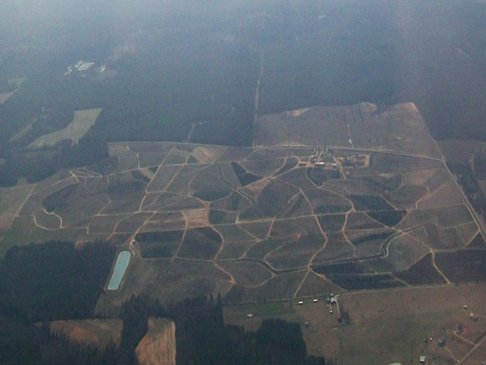
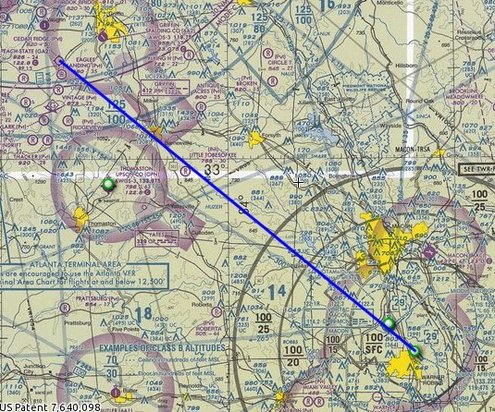
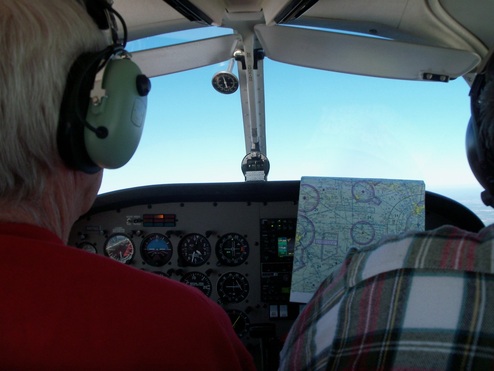
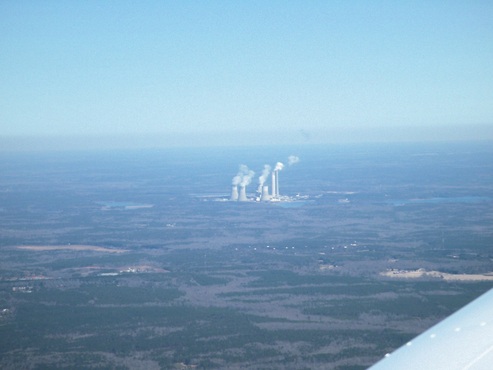
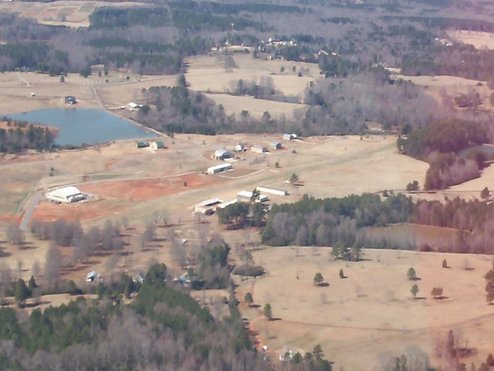
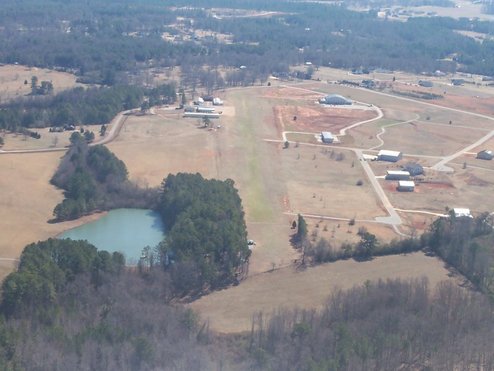
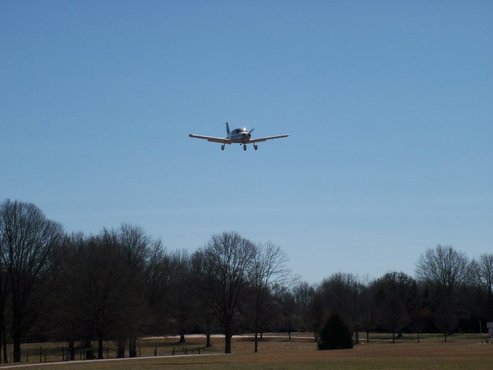
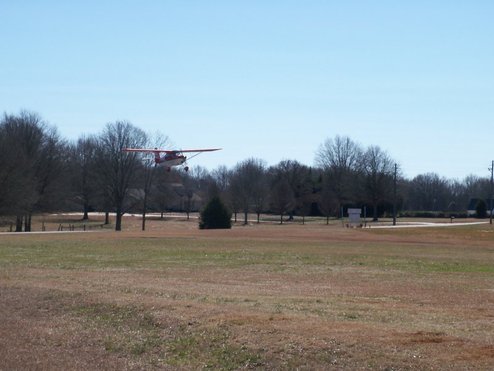
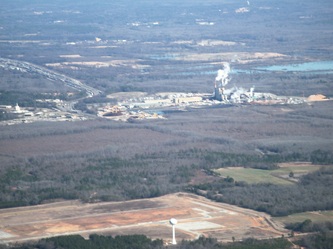
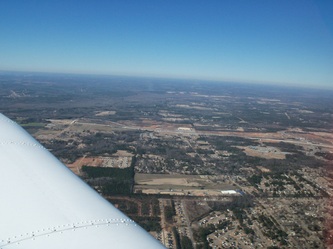
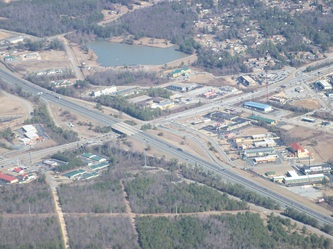
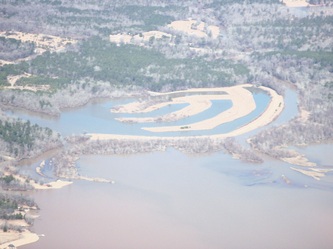
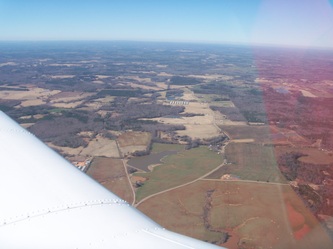
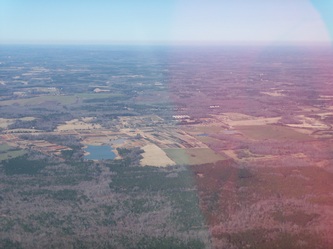
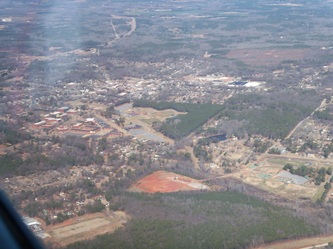
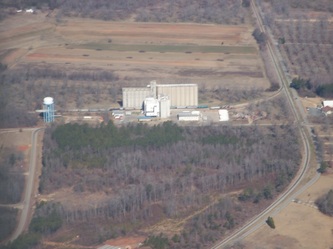
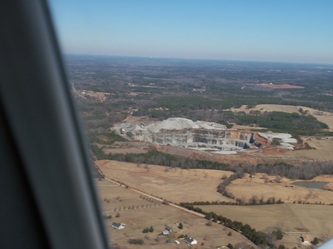
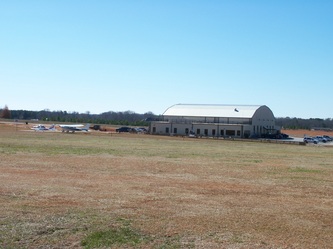
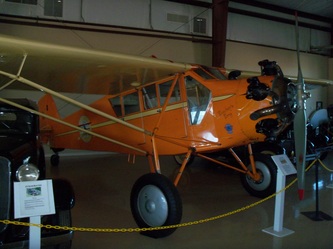
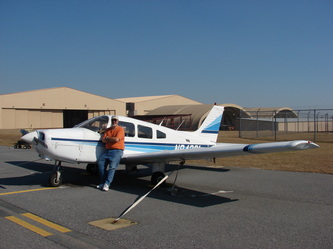
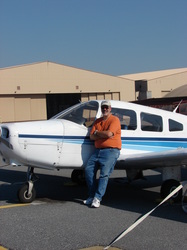
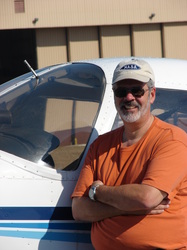
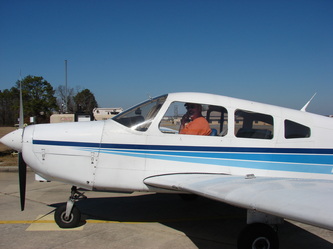
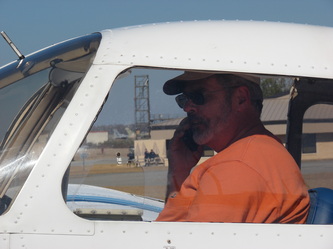
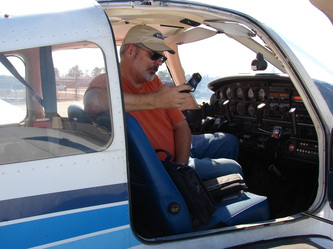
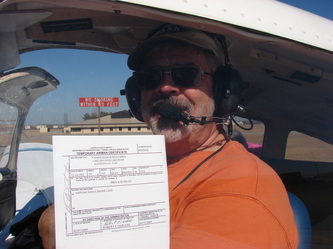
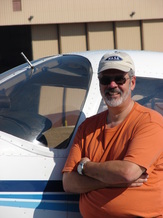
 RSS Feed
RSS Feed